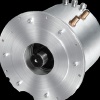Индустриален клъстер "Електромобили" - Учредители:








 |

|

|
| Актуално | За клъстера | Екип | Членове | Документи | Анализи | Услуги | Стани член | Награди | ССЕМ | Контакти |
ИКЕМ - Индустриален клъстер "Електромобили" | Четвъртък, 03.04.2025 | |
|
Review of type-approval legislation and potential risks
1 Introduction
The project focused on M and N category vehicles, from mild hybrids to purely-electric vehicles. There were two main strands to the project. Firstly, the type-approval directives and regulations on vehicle safety and environmental performance were reviewed by TRL experts. The review determined whether the technical requirements were compatible with electric vehicles. Wherever the approval of an electric vehicle might present a problem (due to the way the directive or regulation was written), TRL examined international standards and non-EC legislation to identify possible solutions. Published literature was also sought. The intention was to propose outlines for amendments to the directive or regulation that would permit the type-approval of electric vehicles. Existing proposals for amendments were also taken into account. The second strand of the project concerned the potential safety risks of electric vehicles. Many of the hazards associated with these vehicles will be dealt with through existing EC or UNECE type-approval legislation (provided that it is compatible). However, certain aspects of electric vehicles are potentially very different from conventional vehicles. There may be additional risks that are not covered by the current legislation because it was written for conventional vehicles. TRL reviewed literature to identify such hazards and performed a technical analysis of the findings. It was not the intention to imply that electric vehicles are inherently unsafe or would expose the public to greater risks than conventional vehicles. Instead, the focus was on specific hazards that might not be regulated under current EC or UNECE type-approval legislation. During the course of the project TRL engaged with a variety of stakeholders including vehicle manufacturers and their suppliers, type-approval authorities and test laboratories. This took place on an individual basis through telephone discussions and face-to-face meetings. In addition, a group stakeholder meeting was held in Brussels to present the findings of the interim report and to obtain feedback from the stakeholders.
1.1 Background on electric vehicles For this potential to be realised, however, electric vehicle manufacturers must be able to produce and sell their vehicles to the mass market. To do so, the vehicles will have to meet a wide range of legislative requirements, covering both their safety and environmental performance, just as mass-produced internal combustion engine vehicles do today. |
Продукти 
Комплектна система за задвижване на електромобилиСистемата за електрозадвижване обхваща гама с три основни типоразмера на ел. мощност със съответните компоненти - електромотор и контролер. oще ...Виж всички продуктиАнкета с продължение...
|
|
|
 ЕВРОПЕЙСКИ СЪЮЗ Европейски фонд за регионално развитие Инвестираме във вашето бъдеще |
 |
 ОПЕРАТИВНА ПРОГРАМА „Развитие на конкурентоспособността на българската икономика” 2007-2013 www.opcompetitiveness.bg |
|
Интернет страницата е създадена с финансовата подкрепа на ЕФРР, в рамките на проект „Развитие на Индустриален Клъстер Електромобили” по ДБФП К-02-2/28.09.2011 г. |
|||